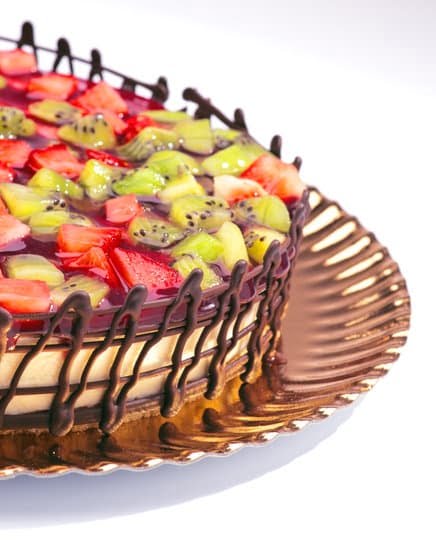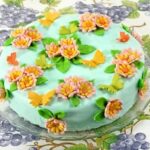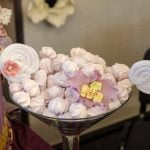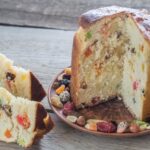Are you looking to learn how to decorate a cake with royal icing for beginners? Royal icing is a versatile and classic way to add stunning designs and decorations to your cakes.
In this article, we will guide you through the basics of working with royal icing, from essential tools and materials to advanced decorating techniques. Whether you’re new to cake decorating or looking to enhance your skills, this step-by-step guide will help you master the art of using royal icing to create beautiful and professional-looking cakes.
Royal icing is a popular choice for decorating cakes due to its smooth texture, ability to hold intricate designs, and long-lasting finish. Understanding the basics of working with royal icing is essential for achieving successful results.
From learning how to prepare your cake for royal icing decoration to troubleshooting common issues that may arise, we will cover everything you need to know as a beginner decorator. By the end of this article, you’ll have all the knowledge needed to confidently use royal icing for decorating your own cakes.
In addition to providing guidance on the fundamental aspects of using royal icing, we will also explore advanced techniques for those looking to take their cake decorating skills to the next level. From creating basic designs with tips and techniques perfect for beginners, all the way up to adding color and flair with creative design ideas, our comprehensive guide will help you become proficient in using royal icing for cake decoration.
So let’s get started on your journey towards mastering the art of decorating cakes with royal icing.
Essential Tools and Materials for Decorating With Royal Icing
When it comes to decorating a cake with royal icing, having the right tools and materials is essential for success. Here are some of the must-have items for beginners looking to explore the world of royal icing decoration:
- Piping Bags: These disposable or reusable bags are used to hold and apply the royal icing onto the cake.
- Piping Tips: These metal tips come in various sizes and shapes, allowing you to create different designs and textures with the royal icing.
- Scribe Tool: This tool is used to help shape and guide the royal icing as you decorate the cake.
- Royal Icing Mix or Ingredients: Whether you choose to make your own royal icing from scratch or use a pre-made mix, having this key ingredient is essential for decorating with royal icing.
- Gel Food Coloring: Unlike liquid food coloring, gel-based colors are ideal for tinting royal icing as they won’t water down the consistency.
- Turntable: A revolving turntable makes it easier to evenly coat and decorate the sides of your cake with royal icing.
It’s also important to have a good workspace that includes parchment paper, clean bowls for mixing, and a flat surface to work on. With these tools and materials in hand, beginners can start their journey into mastering the art of decorating cakes with royal icing.
Understanding how each tool is used and how to properly handle them is crucial when working with royal icing. Practice using different piping tips on a practice board before decorating your cake. This will help you gain confidence and control over your techniques.
As you become more comfortable with using these essential tools, you’ll be able to move on to more advanced techniques such as creating intricate lace designs, delicate flowers, and other complex patterns. With patience and practice, even beginners can achieve professional-looking results when decorating cakes with royal icing.
Preparing Your Cake for Royal Icing Decoration
Before you can start decorating your cake with royal icing, it’s important to make sure that the surface is ready to receive the designs. The first step is to ensure that your cake is completely cooled before you begin the decoration process. Decorating a warm cake can cause the royal icing to melt or become too runny, ruining your designs.
Once your cake has cooled, you’ll want to level the top and trim the sides if necessary. This will create a smooth and even surface for your royal icing decorations. You can use a serrated knife or a cake leveler to achieve this.
Next, it’s time to prepare your cake with a base layer of royal icing. This acts as a “glue” for any additional decorations and provides a smooth foundation for your designs. Use a palette knife to spread a thin layer of royal icing over the top and sides of your cake, making sure to cover any imperfections or crumbs.
After applying the base layer of royal icing, allow it to set for at least 15-20 minutes before moving on to adding your decorative designs. This will ensure that the surface is dry enough to support the weight of additional decorations without sliding or smudging. Following these steps will help ensure that your cake is prepped and ready for beautiful royal icing decorations.
By following this step-by-step guide on how to prepare your cake for royal icing decoration, beginners can set themselves up for success when creating stunning designs on their cakes. With proper cooling, leveling, and applying a base layer of royal icing, you’ll be ready to move on to creating basic and advanced designs with ease.
Creating Basic Royal Icing Designs
Royal icing is a versatile and popular choice for decorating cakes, cookies, and other baked goods. For beginners, the process of creating basic royal icing designs may seem daunting at first, but with the right tips and techniques, anyone can master the art of royal icing decoration.
To get started with decorating a cake with royal icing as a beginner, it’s essential to have the right tools and materials on hand. Here are some items you’ll need:
- Piping bags
- Couplers and various tips (round, star, leaf, etc.)
- Offset spatula
- Toothpicks or small paintbrushes for fine details
- Parchment paper or wax paper for practicing designs
Once you have your tools ready, it’s time to start practicing basic royal icing designs. Here are some tips and techniques to keep in mind:
- Start with outlining: Use a piping bag fitted with a round tip to outline your design onto the cake. This will act as a guide for filling in the rest of the design.
- Flooding the design: Once you’ve outlined your design, switch to a thinner consistency of royal icing to fill in the shape. Use an offset spatula or toothpick to help spread the icing evenly.
- Adding dimension: To create dimension in your design, consider using different consistencies of royal icing. For example, you can pipe flowers with a thicker consistency for more defined petals.
With these tips and techniques in mind, beginners can confidently start practicing basic royal icing designs on their cakes. The key is patience and practice – don’t be afraid to experiment and make mistakes along the way.
Advanced Royal Icing Decorating Techniques
When it comes to royal icing decorating, there are more advanced techniques that can take your cake from good to truly impressive. Once you have mastered the basics of royal icing decoration, you can start experimenting with more intricate designs and patterns. This section will cover some advanced techniques that will help you take your cake decorating skills to the next level.
Piping Consistencies and Techniques
One advanced technique in royal icing decorating is mastering different piping consistencies. Learning how to achieve the right consistency for outlining, flooding, and detailing can make a huge difference in the overall look of your cake. Experimenting with different piping tips and techniques such as rosettes, ruffles, and filigree designs can help you create stunning effects on your cakes.
Dimensional Royal Icing Designs
Another way to elevate your royal icing decorations is by creating dimensional designs on your cakes. This can include making delicate flowers, intricate lace patterns, or even 3D figures using royal icing. With a steady hand and some practice, you can create impressive raised designs that add texture and visual interest to your cakes.
Stenciling and Airbrushing
Using stencils and airbrushing with royal icing can also add a professional touch to your cake decorations. Stencils can be used to create intricate patterns or borders on your cakes, while airbrushing allows for smooth color transitions and gradient effects. Incorporating these techniques into your royal icing decorations can result in visually stunning cakes that are sure to impress.
As you continue to refine your skills and experiment with advanced royal icing decorating techniques, remember that practice makes perfect. Don’t be afraid to try new designs and push yourself creatively. With time and dedication, you’ll be able to create beautifully decorated cakes that showcase your newfound expertise in using royal icing for cake decoration.
Troubleshooting Common Royal Icing Decorating Issues
Decorating a cake with royal icing can be a fun and creative process, but it’s not without its challenges. As a beginner, you may encounter some common issues when working with royal icing. One of the most prevalent problems is the consistency of the icing.
If your royal icing is too runny, it will not hold its shape when piped onto the cake, and if it’s too stiff, it will be difficult to work with. To achieve the perfect consistency, make sure to follow your recipe carefully and adjust the amount of water or powdered sugar as needed.
Another common problem when decorating with royal icing is air bubbles. These can form in your icing when mixing or piping, resulting in unsightly blemishes on your cake. To prevent air bubbles, mix your royal icing slowly and avoid overmixing. When piping the icing onto your cake, try tapping the piping bag gently on a flat surface to release any trapped air before starting.
Color bleeding is another issue that beginners often face when decorating with royal icing. This occurs when different colored icings bleed into each other, creating a messy and unattractive finish. To avoid color bleeding, make sure to allow each color of royal icing to dry completely before adding another color on top. You can also use a technique called “flooding” where you outline a section of your design with thicker icing before filling it in with thinner flooding icing.
By being aware of these common issues and learning how to troubleshoot them, beginners can overcome obstacles and create beautifully decorated cakes using royal icing.
| Common Issue | Troubleshooting Tip |
|---|---|
| Consistency of Royal Icing | Follow recipe carefully; adjust water or powdered sugar as needed |
| Air Bubbles | Mix slowly; tap piping bag gently to release trapped air |
| Color Bleeding | Allow each color to dry completely before adding another color; use flooding technique |
Adding Color and Flair to Your Cake With Royal Icing
Choosing the Right Color Scheme
When it comes to decorating a cake with royal icing, selecting the right color scheme is essential. Consider the theme or occasion for the cake, as well as any specific preferences of the recipient. For beginners, it’s best to start with a limited color palette to avoid overwhelming yourself. Stick to just a few colors and focus on creating a cohesive design.
Using Different Piping Techniques
One of the most exciting aspects of decorating with royal icing is the variety of piping techniques available. From outlining and flooding to creating intricate designs with delicate details, there are countless ways to add flair to your cake. As a beginner, take the time to practice different piping techniques on parchment paper before applying them to your cake. This will help you gain confidence and improve your skills before committing to the final decoration.
Incorporating Edible Decorations
In addition to using royal icing for decoration, consider incorporating edible decorations such as sprinkles, edible pearls, or even small fondant cutouts. These elements can add texture and visual interest to your cake design. Just be sure that any edible decorations you use are compatible with royal icing and won’t cause it to become soggy or discolored.
By following these tips for adding color and flair to your cake with royal icing, beginners can elevate their decorating skills and create stunning designs that are sure to impress. Remember that practice makes perfect, so don’t be afraid to experiment and get creative with your cake decorations.
Finishing Touches
After you have successfully decorated your cake with royal icing, it’s time to add the finishing touches that will truly make your creation stand out. Adding final details can take your cake from ordinary to extraordinary, and with a few simple techniques, you can achieve professional-looking results that will impress any guest.
One of the most important final touches when decorating a cake with royal icing is smoothing out any rough edges or imperfections. Use a small offset spatula to gently smooth out any areas where the icing may have dried unevenly or created jagged edges. This simple step can make a big difference in the overall appearance of your cake.
Another way to add a beautiful finishing touch to your cake is by incorporating edible decorations such as pearls, sprinkles, or edible flowers. These little accents can add color and texture to your design and create a stunning visual impact. You can also use piping bags with different tips to create decorative borders and trims around the edges of your cake.
Finally, consider adding a personalized message or monogram to your cake using royal icing. This is a great way to customize your creation for a special occasion such as a birthday or anniversary. You can use stencils or freehand drawing techniques to write out names, dates, or sentimental messages directly onto the surface of the cake.
| Finishing Touches | Finalizing Your Cake Decoration With Royal Icing |
|---|---|
| Smoothing out rough edges | Using an offset spatula |
| Adding edible decorations | Pearls, sprinkles, edible flowers |
| Personalized messages | Using stencils or freehand drawing techniques |
Conclusion
In conclusion, mastering the art of decorating cakes with royal icing for beginners requires patience, practice, and a willingness to learn from both successes and failures. By understanding the basics of royal icing, gathering essential tools and materials, preparing your cake properly, and experimenting with basic and advanced techniques, you can create stunning designs that will impress your friends and family.
As you continue to hone your skills in royal icing decoration, don’t be discouraged by common issues that may arise. Troubleshooting is a natural part of the learning process, and with perseverance, you’ll find solutions to any challenges that come your way.
Adding color and flair to your cake designs is another exciting aspect of working with royal icing. Whether you’re creating elegant borders or intricate floral patterns, there’s no limit to the creative possibilities at your fingertips.
Remember that the finishing touches are just as important as the initial design. Take time to ensure every detail is perfect before presenting your masterpiece. With dedication and practice, you’ll soon be on your way to becoming a skilled cake decorator using royal icing. And always keep in mind that even experienced decorators started as beginners once too. So don’t be afraid to experiment and have fun with it.
Frequently Asked Questions
Can I Put Royal Icing Directly on a Cake?
It is possible to put royal icing directly on a cake, but it’s important to do so carefully. The icing should be at the right consistency and thickness to avoid dripping or smudging when applied.
How Do You Coat a Cake With Royal Icing?
To coat a cake with royal icing, start by preparing the icing to a spreadable consistency. Then, apply a thin layer of icing on the top and sides of the cake using a spatula, ensuring an even coating without leaving any gaps or bumps.
How to Make Royal Icing Decorations for Cake?
Making royal icing decorations for a cake involves preparing the icing to the desired consistency (thicker for outlining and thinner for flooding). Use piping bags and tips to pipe different shapes and designs onto parchment paper, then allow them to dry completely before carefully peeling off and placing them on the cake.

Welcome to our cake decorating blog! My name is Destiny Flores, and I am the proud owner of a cake decorating business named Cake Karma. Our mission is to provide delicious, beautiful cakes for all occasions. We specialize in creating custom cakes that are tailored specifically to each customer’s individual needs and tastes.





